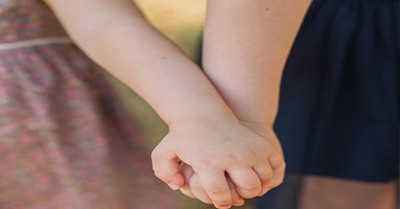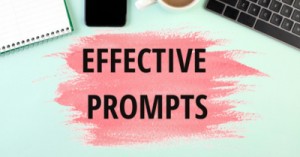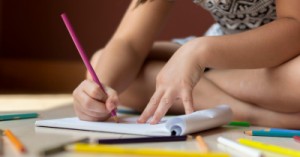In early childhood education, the most powerful tools aren’t found in policy binders or compliance checklists—they’re embedded in the emotional fabric of our relationships. Emotional intelligence isn’t a soft skill; it’s a pedagogical framework. It shapes how we teach, how we document, and how we restore dignity to the everyday moments that define a child’s learning journey.
What Is Emotional Intelligence as Pedagogy?
At its core, emotional intelligence as pedagogy means teaching through connection. It’s the intentional use of empathy, self-awareness, and relational attunement to guide learning. Educators become emotional architects—designing environments where children feel seen, safe, and inspired.
This approach reframes traditional pedagogy by asking:
- How do children feel in this space?
- What emotional cues are emerging through play, conflict, or curiosity?
- How can documentation reflect not just what children do, but how they feel?
The Pedagogical Power of Emotion
Emotionally intelligent pedagogy transforms:
- Documentation into storytelling: capturing joy, struggle, and growth with nuance.
- Planning into co-design: responding to children’s emotional rhythms and interests.
- Assessment into reflection: valuing emotional safety as a core indicator of quality.
It’s not about abandoning structure—it’s about embedding emotional resonance into every layer of practice.
From Compliance to Connection
In a sector often weighed down by regulation, emotional intelligence offers a restorative lens. It invites educators to:
- Reclaim their relational instincts
- Document with warmth and authenticity
- Advocate for systems that honor emotional labor
This isn’t just a pedagogical shift—it’s a cultural one. It’s about restoring joy, dignity, and emotional depth to early learning.
Emotional Intelligence in Action: Early Childhood Examples
1. Attuned Transitions
An educator notices a child lingering at the edge of group time, clutching a comfort object. Instead of prompting compliance, the educator gently acknowledges the child’s emotional state:
“You’re holding your bunny tight today. Would you like to sit beside me while we listen?”
This moment validates the child’s feelings, scaffolds emotional safety, and builds trust.
2. Documenting Delight
During outdoor play, a child discovers a snail and exclaims, “It’s slimy and slow!” The educator captures this moment not just as a science observation but as emotional evidence:
“Today, Zara’s joy was sparked by a tiny snail. Her curiosity led to gentle touch, careful watching, and shared laughter.”
This transforms documentation into a relational narrative, showcasing emotional engagement as learning.
3. Conflict as Connection
Two children argue over a toy. Instead of enforcing a quick resolution, the educator models emotional language:
“It sounds like you both really wanted the truck. Let’s take turns and talk about how that felt.”
This builds emotional vocabulary and teaches empathy through lived experience.
4. Culturally Safe Rituals
An educator integrates a morning greeting ritual using symbolic gestures from children’s home cultures—like a hand-on-heart or a shared song. This fosters belonging and emotional grounding, especially for children navigating multiple cultural identities.
5. Joy Tracking in Planning
A team of educators uses a “Delight Tracker” to log moments of joy, awe, and emotional resonance. These entries inform curriculum planning, ensuring that emotional engagement drives learning goals.
Example entry: “Luca’s fascination with shadows sparked a week-long inquiry into light and movement.”
6. Emotionally Intelligent Snack Time
A child refuses to eat during lunch. Instead of insisting, the educator sits beside them and says:
“Sometimes our bodies feel unsure. Would you like to help me prepare a plate together?”
This models emotional attunement and restores agency through gentle co-regulation.
Emotional intelligence isn’t an add-on—it’s the foundation. When we teach through emotion, we teach for life.
Further Reading
Pedagogical Approaches In Early Childhood
Infant And Toddler Pedagogy
What Is Pedagogy In Early Childhood
Pedagogical Documentation







 Here is the list of the EYLF Learning Outcomes that you can use as a guide or reference for your documentation and planning. The EYLF
Here is the list of the EYLF Learning Outcomes that you can use as a guide or reference for your documentation and planning. The EYLF The EYLF is a guide which consists of Principles, Practices and 5 main Learning Outcomes along with each of their sub outcomes, based on identity,
The EYLF is a guide which consists of Principles, Practices and 5 main Learning Outcomes along with each of their sub outcomes, based on identity, This is a guide on How to Write a Learning Story. It provides information on What Is A Learning Story, Writing A Learning Story, Sample
This is a guide on How to Write a Learning Story. It provides information on What Is A Learning Story, Writing A Learning Story, Sample One of the most important types of documentation methods that educators needs to be familiar with are “observations”. Observations are crucial for all early childhood
One of the most important types of documentation methods that educators needs to be familiar with are “observations”. Observations are crucial for all early childhood To support children achieve learning outcomes from the EYLF Framework, the following list gives educators examples of how to promote children's learning in each individual
To support children achieve learning outcomes from the EYLF Framework, the following list gives educators examples of how to promote children's learning in each individual Reflective practice is learning from everyday situations and issues and concerns that arise which form part of our daily routine while working in an early
Reflective practice is learning from everyday situations and issues and concerns that arise which form part of our daily routine while working in an early Within Australia, Programming and Planning is reflected and supported by the Early Years Learning Framework. Educators within early childhood settings, use the EYLF to guide
Within Australia, Programming and Planning is reflected and supported by the Early Years Learning Framework. Educators within early childhood settings, use the EYLF to guide When observing children, it's important that we use a range of different observation methods from running records, learning stories to photographs and work samples. Using
When observing children, it's important that we use a range of different observation methods from running records, learning stories to photographs and work samples. Using This is a guide for educators on what to observe under each sub learning outcome from the EYLF Framework, when a child is engaged in
This is a guide for educators on what to observe under each sub learning outcome from the EYLF Framework, when a child is engaged in The Early Years Learning Framework describes the curriculum as “all the interactions, experiences, activities, routines and events, planned and unplanned, that occur in an environment
The Early Years Learning Framework describes the curriculum as “all the interactions, experiences, activities, routines and events, planned and unplanned, that occur in an environment


